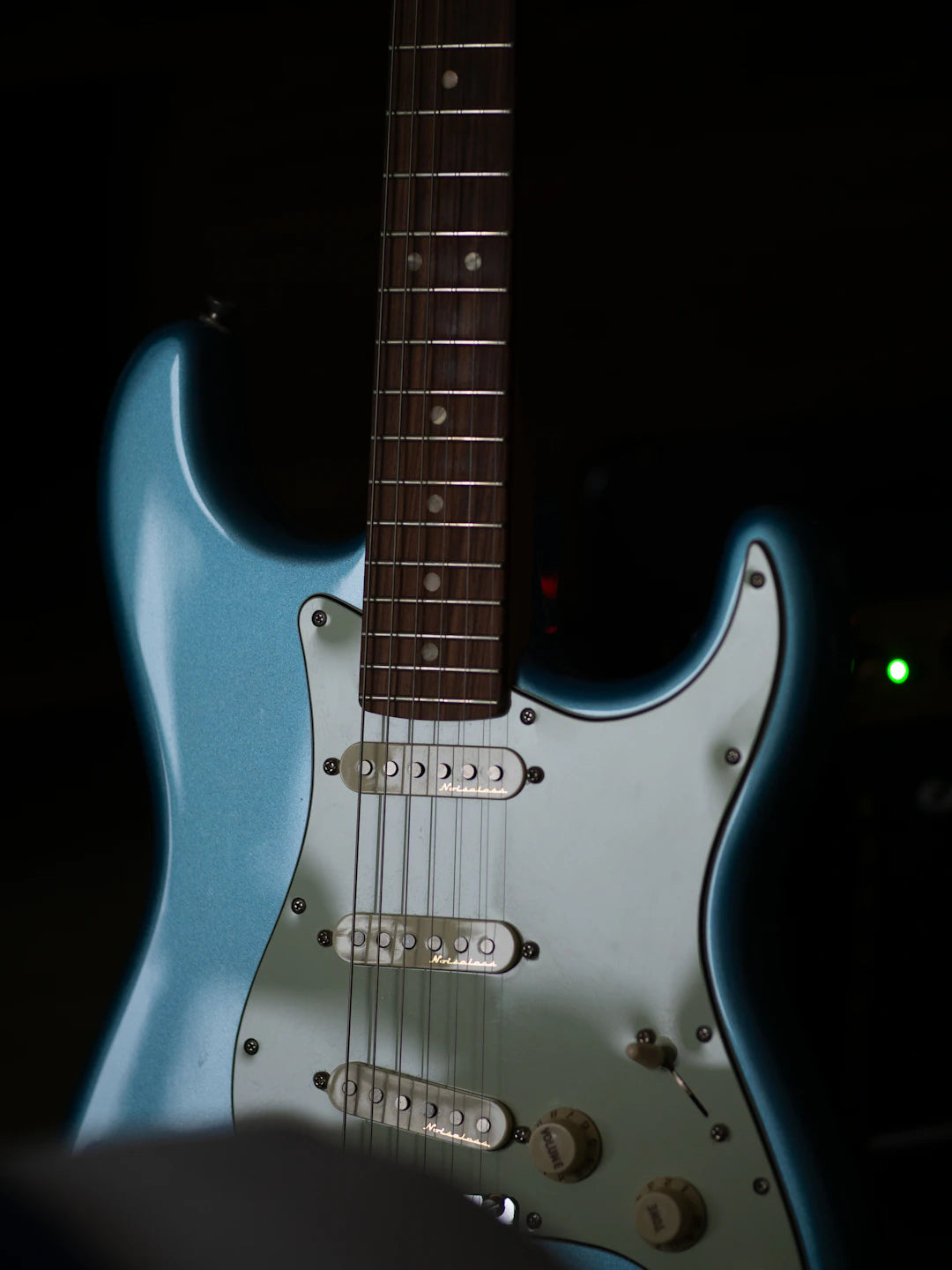Frequently Asked Questions
1. What are guitar pickups?
2. What are the different types of guitar pickups?
3. How does the position of pickups affect sound?
4. What factors should I consider when choosing guitar pickups?
5. How can I maintain my guitar pickups?
Guitar pickups are crucial to the sound and feel of your instrument. They play a vital role in determining your tone, whether you're strumming chords or shredding solos. In this comprehensive guide, we’ll delve into the different types of guitar pickups, their features, and how they impact your playing style. Whether you're seeking vintage Stratocaster pickups or guitar pickups made in America, understanding the differences will help you make informed decisions for your sound. Let’s get started!
What Are Guitar Pickups?
At its core, a guitar pickup is a device that captures the sound vibrations of your strings and converts them into an electrical signal. This signal is then sent to an amplifier, allowing you to hear the music you create. Guitar pickups come in various shapes, sizes, and types, each impacting the tonal quality and character of your guitar. Understanding these differences is essential for any aspiring guitarist.
Types of Guitar Pickups
Single-Coil Pickups
Single-coil pickups are the classic choice for many guitarists, particularly in rock, blues, and country genres. Known for their bright and crisp sound, single-coils tend to have a lower output compared to other types. This makes them great for achieving a clean tone but can also lead to interference from other electronic devices.
- Characteristics: Bright and clear sound, lower output
- Genres: Rock, blues, country
- Examples: Vintage Stratocaster pickups
Humbucker Pickups
Humbucker pickups are designed to cancel out the humming noise often associated with single-coil pickups. They feature two coils, wired together in a way that minimizes electrical interference. The result is a thicker, warmer tone that’s ideal for rock, metal, and heavier styles of music.
- Characteristics: Warm and thick sound, higher output
- Genres: Rock, metal, jazz
- Notable Features: Noise-canceling design
P90 Pickups
P90 pickups offer a unique hybrid tone that sits between single-coil and humbucker pickups. They typically have a single coil design but with a wider magnetic field, resulting in a fatter sound. P90s are popular for their distinctive bite and are favored in genres like rock and blues.
- Characteristics: Distinctive bite, versatile sound
- Genres: Rock, blues
- Notable Features: Combines characteristics of singles and humbuckers
Understanding the Pickup Construction
The construction of guitar pickups significantly affects their sound. Let's break down the key components:
Coils
The coils in a pickup are essential for capturing sound. Typically, pickups contain one or two coils of wire wrapped around a magnet. The number of coils and the gauge of wire can dramatically influence the output and tone. Thicker wire can lead to a more robust sound, while thinner wire may provide clarity and brightness.
Magnets
The type of magnet used in a pickup also plays a critical role. Alnico (aluminum, nickel, and cobalt) magnets are common in vintage-style pickups, contributing to a warm, classic sound. Ceramic magnets, on the other hand, usually offer a higher output and a more aggressive tone, making them suitable for heavier music genres.
Baseplate
The baseplate supports the coils and may affect the tonal qualities of a pickup. A metal baseplate can enhance sustain and resonance, while a plastic baseplate may keep the sound more focused.
The Role of Pickup Position
The position of the pickup on the guitar affects its tonal characteristics. Let’s explore how different placements can influence the sound:
Neck Pickup
The neck pickup generally produces a warmer sound with increased bass response. This makes it ideal for playing jazz or softer melodies, as it captures the body resonance of the guitar.
Bridge Pickup
Conversely, the bridge pickup tends to deliver a brighter and sharper tone. It’s great for cutting through the mix during solos and is preferred for heavier genres. The bridge position also tends to emphasize higher frequencies.
Middle Pickup
Found on guitars with three pickups, the middle pickup can blend the characteristics of both the neck and bridge pickups, offering a balanced tonal quality. It’s often utilized for rhythm playing and shimming between genres.
The Impact of Windings and Resistance
The number of windings around the coils influences the resistance and output of the pickup. In general, pickups with more windings produce a stronger signal but can suffer from clarity. Here's how different winding configurations can affect your tone:
- Low Output: Typically cleaner and brighter, suitable for clean tones and genres like jazz.
- Medium Output: A versatile choice, often found in standard configurations for rock and blues.
- High Output: Perfect for heavy genres; provides a robust tone with significant sustain.
Pickup Wiring Configurations
Understanding pickup wiring configurations is essential for customizing your guitar’s sound. Let’s break down the main configurations:
Series vs. Parallel
In a series configuration, the magnetic fields of two pickups are combined, resulting in a higher output and more pronounced mid-range frequencies. Conversely, a parallel configuration maintains clarity and balance, producing a brighter tone but with lower output.
Coil Splitting and Tapping
Many humbucker pickups feature coil-splitting options that allow guitarists to access single-coil sounds. This versatile feature enhances your guitar's tonal range, making it more adaptable for various musical styles.
How to Choose the Right Pickup
Choosing the right pickup is a multi-faceted decision. Here are some factors to consider:
Musical Style
Determine the genres you predominantly play. If you're into rock or blues, vintage Stratocaster pickups or P90s may appeal to you. For metal, consider high-output humbuckers.
Playing Technique
Your playing style is crucial in choosing the right pickups. If you favor clean notes and articulate runs, single-coils may suit you best. Alternatively, if you play heavy riffs and solos, humbuckers might provide the necessary power.
Compatibility with Your Guitar
Ensure that the pickups you choose are compatible with your guitar body and style. Different guitars are built to accommodate specific types of pickups, so research before making a purchase.
Installation and Maintenance of Guitar Pickups
Proper installation and maintenance are vital for getting the best sound from your pickups. Here’s what you need to know:
Installation
If you're confident in your skills, installing pickups can be a rewarding DIY project. However, for those who aren't as handy, it’s wise to seek professional help to ensure optimal installation. Ensure that the pickups are correctly aligned and that your guitar's wiring is secure.
Maintaining Your Pickups
Keep your guitar clean to maintain optimal sound quality. Dust can accumulate on pickups, interfering with their performance. Regularly check your wiring for wear and tear and consider adjusting the pickup height to optimize tone and output.
Explore Your Options and Create Your Sound
Guitar pickups are more than just hardware; they are a crucial part of your sound identity. Understanding the various types of pickups, their characteristics, and how they work together will empower you to make better choices in your musical journey. Whether you’re drawn to the nostalgia of vintage Stratocaster pickups or the reliable performance of guitar pickups made in America, your perfect setup is out there waiting for you. Dive deep, experiment, and find the tone that resonates with your soul. Happy playing!
Explore the world of another Shopify or Wix store owner. Visit their captivating online store. Keep in mind that this is a promotional link, and we are not responsible for the content of the linked store.











